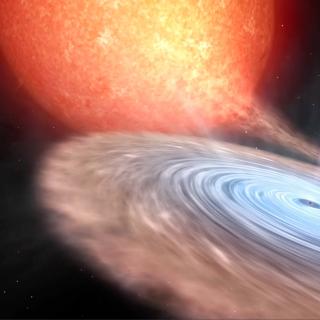Bibcode
Malzac, J.; Maitra, D.; Fender, R. P.; Altamirano, D.; Shahbaz, T.; Sanna, A.; O'Brien, K.; Melandri, A.; Motta, S. E.; Baglio, M. C.; Imbrogno, M.; Ambrosino, F.; Uttley, P.; Maccarone, T. J.; Russell, D. M.; Casella, P.; Veledina, A.; Vincentelli, F. M.; Ulgiati, A.
Bibliographical reference
Astronomy and Astrophysics
Advertised on:
10
2024
Journal
Citations
4
Refereed citations
3
Description
We report two epochs of simultaneous near-infrared (IR) and X-ray observations of the low-mass X-ray binary black hole candidate Swift J1753.5–0127 with a subsecond time resolution during its long 2005–2016 outburst. Data were collected strictly simultaneously with VLT/ISAAC (KS band, 2.2 μm) and RXTE (2–15 keV) or XMM-Newton (0.7–10 keV). A clear correlation between the X-ray and the IR variable emission is found during both epochs but with very different properties. In the first epoch, the near-IR variability leads the X-ray by ∼130 ms, which is the opposite of what is usually observed in similar systems. The correlation is more complex in the second epoch, with both anti-correlation and correlations at negative and positive lags. Frequency-resolved Fourier analysis allows us to identify two main components in the complex structure of the phase lags: the first component, characterised by a near-IR lag of a few seconds at low frequencies, is consistent with a combination of disc reprocessing and a magnetised hot flow; the second component is identified at high frequencies by a near-IR lag of ≈0.7 s. Given the similarities of this second component with the well-known constant optical/near-IR jet lag observed in other black hole transients, we tentatively interpret this feature as a signature of a longer-than-usual jet lag. We discuss the possible implications of measuring such a long jet lag in a radio-quiet black hole transient.
Related projects

Black holes, neutron stars, white dwarfs and their local environment
Accreting black-holes and neutron stars in X-ray binaries provide an ideal laboratory for exploring the physics of compact objects, yielding not only confirmation of the existence of stellar mass black holes via dynamical mass measurements, but also the best opportunity for probing high-gravity environments and the physics of accretion; the most
Montserrat
Armas Padilla